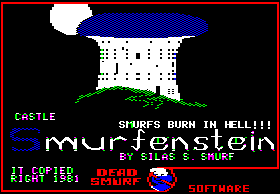Narrative (cont.)
This week, I started out doing some research on storytelling and telling impactful stories.
https://www.linkedin.com/pulse/5-ideas-help-create-impactful-storytelling-kieran-mccann/
https://www.forbes.com/sites/skollworldforum/2013/08/01/the-5-secrets-of-storytelling-for-social-change/#5c6af04c4859
https://www.weforum.org/agenda/2018/06/storytelling-for-social-change-communication-initiative/
My message has pretty much been established, it’s just a matter of crafting around it. Stylistically, I’m thinking of having more geometric models (because I’m a sucker for the polygon aesthetic). I was inspired by this incredible short film I’d discovered years ago and managed to dig up again: https://www.youtube.com/watch?v=b5P2Qmq9r40 in which everything was made out of origami. Making the models geometric looking would be simple enough–I would just leave everything in 1 mode in Maya. I would just have to be very careful with my mesh and think about how I’d want to weight paint my models, whether I want them to move more organically or more like paper puppets.
In brainstorming my storyline, I decided I wanted to animate trees growing and looked for tutorials to learn how to do it. I found this great video I can reference: https://forums.autodesk.com/t5/maya-forum/maya-2018-how-to-animate-a-growing-tree/td-p/7982261.
It doesn’t show how to do the leaves, but I can try to figure that out myself or ask for help. I have several mentors I can refer to for advice in my network, like Professor Smuga, my alum adviser Raya, and some friends who are in animation.
Speaking of adviser, I’ve been in contact with Raya and chatting with her. I’ve gotten some great advice so far so I’m excited to work with her more as my project continues to take form!
Display
On another note, after deliberating with some friends, I realized that my display set up would present a couple of problems:
- Material. I would need to find a material sturdy enough to provide a stable surface for the pedestals for my holograms to be displayed on. This means it would most likely be made out of wood, or some kind of recycled material if I can find it. I know that wood is expensive, especially if I require a decent amount of it. This means the ideal situation would be if I could find some sort of alternative material to repurpose (which would, actually, fit in perfectly with my theme. Hmm…..HMMMmmmMM).
- Stability. In the same vein, I recognize that I my display needs to be sturdy enough. If I’m using iPads or some other kind of monitor, I would rather them not run the risk of being knocked over. That means the pedestal set up would be a bit precarious.
- Screens. After watching some more videos and looking into the way the holograms are projected, I realized that the brighter the screens (and the clearer the glass), the better the quality of the projections are. This means that my best bet would be using the iPads or some kind of tablet, as opposed to just a monitor. Perhaps a laptop would work as well, but the structure of laptops would be cumbersome for this purpose. The accessibility of laptops are also a tad slim. However, Professor Ault has brought up a good point that the iPads might be in short supply come presentation day. Perhaps I can get my hands on one and then use a series of smaller screens for more supporting holograms.
HANG ON I legitimately just had a new idea for my display set up. Maybe instead of using pedestals, I can create a physical environment to mimic (or contrast) the one in my holographic animation as an extension of sorts. That would solve my set up problem, and provide a sufficient justification for my use of holographic technology as a storytelling medium. I’d like to look into this idea further, and hopefully get some feedback!
 This mod took the original Castle Wolfenstein and replaced the Nazi sprites with that of Smurfs.
This mod took the original Castle Wolfenstein and replaced the Nazi sprites with that of Smurfs.